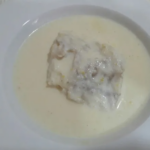The importance of additives in food is very important and that is why, taking advantage of the fact that many specific dates for Christmas parties are coming soon, in which the whole family gathers around a table to eat together, we want to contribute to improving the quality of the products and raw materials that we buy to prepare subsequent recipes and dishes at home, explaining what food additives are and what they are used for. In this article we will explain what food additives are, we will show you a list of the 10 most common food additives.
What are food additives and what are they for?
Are you wondering what food additives are for? Well, food additives are substances that do not have any nutritional value by themselves but are added to foods and beverages intentionally to modify and/or maintain their organoleptic characteristics, and facilitate the preparation, processing and conservation of these products.
The main functions of food additives are:
- Give homogeneity to the product.
- Ensuring or maintaining the nutritional value of the food.
- Increase product stability.
- Ensuring safety and health.
- Make possible the availability of food outside carbon oxide.
- Assist in the manufacture, transformation, preparation, transport and storage of food.
- Boost consumer acceptance.
In short, they are substances that add more flavor and color to food, improve its texture and durability, and facilitate its preparation and distribution process to the national and international market, but… why is so much talked about these days?
What are the most common food additives?
The most common additives are classified into 10 different categories according to their use in the food industry, which are: aromatizes, colorants, preservatives, antioxidants, acidulates, sweeteners, thickeners, emulsifiers, flavorings and derivatives of starch.
Within these 10 categories we find a classification of the most common food additives:
- Monosodium glutamate(E-621): as we have said before, it is a food flavor intensifier, especially salty and of oriental origin.
- Aspartame(E-951): it is a non-caloric chemical sweetener that provides a sweet taste (it is 200 times sweeter than refined sugar) especially in drinks or low-calorie products or suitable for diabetics.
- Saccharin(E-954): is another low-calorie chemical sweetener between 300 and 500 times sweeter than refined sugar. Ideal for this sugar-free mango jam recipe, for example.
- Ascorbic acid(E-300): it is a natural antioxidant better known as vitamin C that is used to prevent food from oxidizing too quickly when it comes into contact with oxygen.
- Citric acid(E-330): is an organic or synthetic acidulating and citrus flavoring that can be found in many processed foods and beverages.
- Carrageenan(E-407): it is a natural thickener that is extracted from marine red algae, very common in vegetable milks for example.
- Carmine acid(E-120): is a synthetic dye with a color between bright red and dark carmine that is obtained by crushing insects of the cochineal family ( Dactylopius crocus).
- Cur cumin(E-100i): is another natural or synthetic colorant with a color between bright yellow and intense orange with a bitter taste that is extracted from the spice called turmeric.
- Sodium nitrite(E250): this is a synthetic preservative used to prevent bacteria and microbes, widely used in products derived from meat, ham or fish.
- Lecithin(E-322): is a natural emulsifier that is extracted from soybeans, egg yolks or sunflower seeds and is soluble in water and fat.



